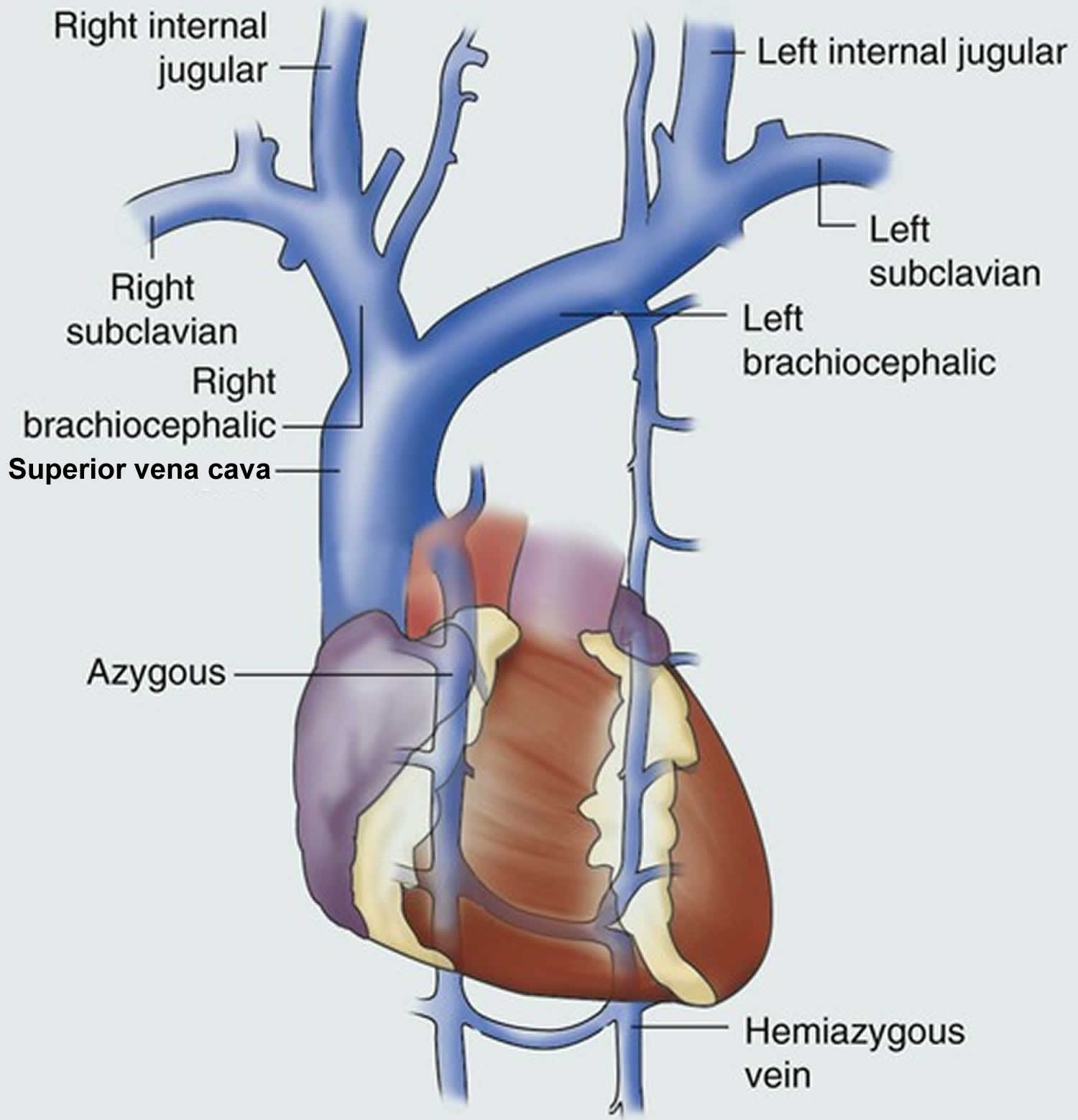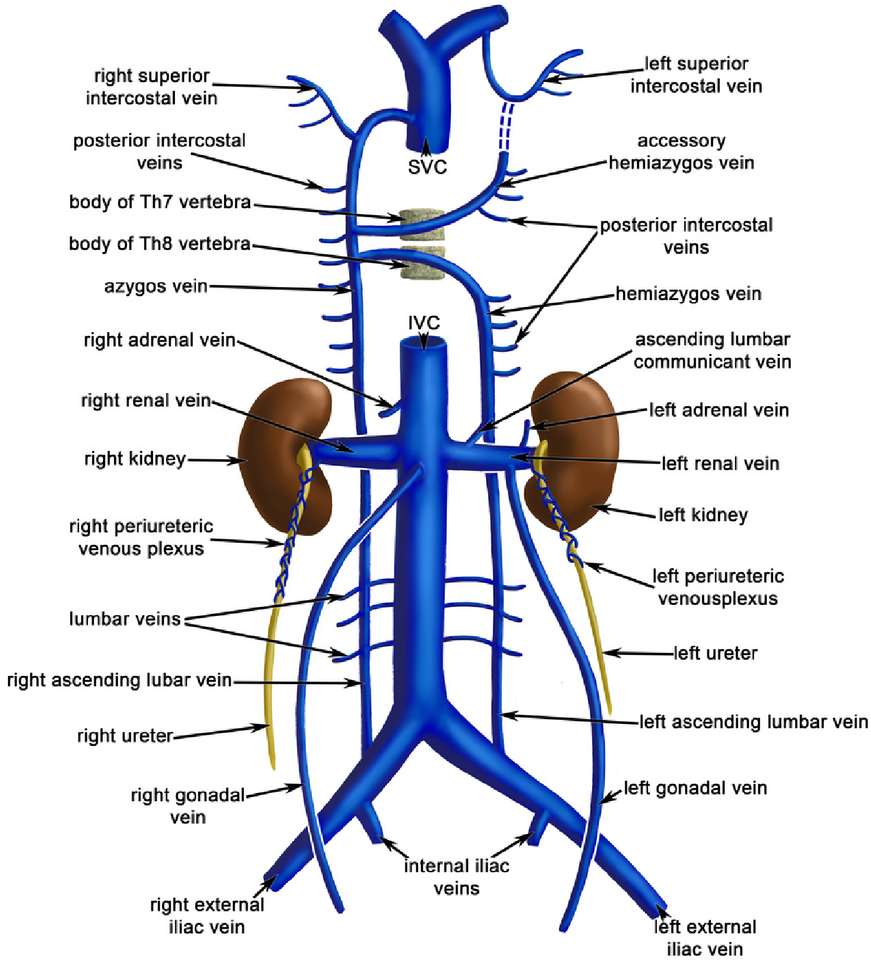Makindo Medical Notes"One small step for man, one large step for Makindo" |
|
|---|---|
| Download all this content in the Apps now Android App and Apple iPhone/Pad App | |
| MEDICAL DISCLAIMER: The contents are under continuing development and improvements and despite all efforts may contain errors of omission or fact. This is not to be used for the assessment, diagnosis, or management of patients. It should not be regarded as medical advice by healthcare workers or laypeople. It is for educational purposes only. Please adhere to your local protocols. Use the BNF for drug information. If you are unwell please seek urgent healthcare advice. If you do not accept this then please do not use the website. Makindo Ltd. |
Superior and Inferior Vena Cava
-
| About | Anaesthetics and Critical Care | Anatomy | Biochemistry | Cardiology | Clinical Cases | CompSci | Crib | Dermatology | Differentials | Drugs | ENT | Electrocardiogram | Embryology | Emergency Medicine | Endocrinology | Ethics | Foundation Doctors | Gastroenterology | General Information | General Practice | Genetics | Geriatric Medicine | Guidelines | Haematology | Hepatology | Immunology | Infectious Diseases | Infographic | Investigations | Lists | Microbiology | Miscellaneous | Nephrology | Neuroanatomy | Neurology | Nutrition | OSCE | Obstetrics Gynaecology | Oncology | Ophthalmology | Oral Medicine and Dentistry | Paediatrics | Palliative | Pathology | Pharmacology | Physiology | Procedures | Psychiatry | Radiology | Respiratory | Resuscitation | Rheumatology | Statistics and Research | Stroke | Surgery | Toxicology | Trauma and Orthopaedics | Twitter | Urology
Related Subjects: |The Coronary Arteries |The Axillary Artery |The Brachial Artery |The Carotid Artery |The Femoral Artery |The Popliteal artery |The Subclavian Artery |The Iliac Artery |The Brachial Artery |The Axillary Artery |The radial and Ulnar Artery |The Vena Cava
The superior and inferior vena cava are the two largest veins in the human body. They are responsible for returning deoxygenated blood from the body to the right atrium of the heart. The superior vena cava drains blood from the upper body, while the inferior vena cava drains blood from the lower body.
Superior Vena Cava

- Origin :
- Formed by the union of the left and right brachiocephalic veins, which receive blood from the head, neck, upper limbs, and upper chest.
- Course :
- Descends vertically in the right side of the superior mediastinum.
- Enters the right atrium of the heart at the level of the third costal cartilage.
- Tributaries :
- Left and Right Brachiocephalic Veins
- Azygos Vein
- Small veins from the mediastinum and pericardium
- Functions :
- Returns deoxygenated blood from the upper body (head, neck, upper limbs, and chest) to the right atrium.
Inferior Vena Cava

- Origin :
- Formed by the union of the left and right common iliac veins, which receive blood from the lower limbs, pelvis, and lower abdomen.
- Course :
- Ascends through the abdomen along the right side of the vertebral column.
- Passes through the diaphragm at the caval opening (T8 level).
- Enters the right atrium of the heart.
- Tributaries :
- Common Iliac Veins
- Lumbar Veins
- Renal Veins
- Right Gonadal Vein (testicular or ovarian)
- Hepatic Veins
- Inferior Phrenic Veins
- Suprarenal Veins
- Functions :
- Returns deoxygenated blood from the lower body (lower limbs, pelvis, and abdomen) to the right atrium.
Clinical Relevance
- Superior Vena Cava Syndrome (SVCS) :
- Occurs when the superior vena cava is obstructed, leading to impaired blood flow from the upper body.
- Causes: Often due to tumours, such as lung cancer or lymphoma, compressing the vein.
- Symptoms: Swelling of the face, neck, and upper limbs, shortness of breath, and dilated veins in the upper body.
- Treatment: Depends on the cause; may include radiation therapy, chemotherapy, or stenting to relieve obstruction.
- Inferior Vena Cava Thrombosis :
- Formation of a blood clot in the inferior vena cava, which can obstruct blood flow.
- Causes: May be due to deep vein thrombosis (DVT) extending from the legs or pelvis, cancer, or other hypercoagulable states.
- Symptoms: Swelling and pain in the lower limbs, and in severe cases, may lead to pulmonary embolism.
- Treatment: Anticoagulation therapy, thrombolysis, or surgical intervention in severe cases.
- Congenital Anomalies :
- Rare congenital anomalies can affect the structure of the superior or inferior vena cava, potentially leading to circulatory issues.
- Diagnosis: Typically identified through imaging studies such as ultrasound, CT, or MRI.
- Treatment: Depends on the specific anomaly and associated symptoms; may require surgical correction.
Summary
The superior and inferior vena cava are the primary veins responsible for returning deoxygenated blood to the heart. The superior vena cava drains the upper body, while the inferior vena cava drains the lower body. Understanding their anatomy and clinical relevance is essential for diagnosing and managing conditions such as superior vena cava syndrome, inferior vena cava thrombosis, and congenital anomalies.